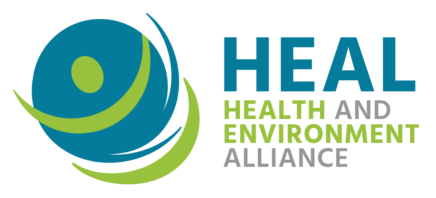As EU member states, regional and local authorities prepare to implement the revised Ambient Air Quality Directive (AAQD), this briefing by the Health and Environment Alliance (HEAL) argues that decision-makers and authorities should pay particular attention to addressing socio-economic inequalities in their clean air efforts. The swift transposition and implementation of the new rules, with strengthened administrative collaboration and the full utilisation of financial support schemes, promise significant progress towards cleaner air across Europe. Improved air quality will be beneficial to everyone and contribute to preventing health inequalities for those living in socioeconomically disadvantaged areas.

5 March 2018, Brussels. Toxic substances linked to a range of adverse health impacts can be present in carpets sold in the European Union (EU), the European Public Health Alliance (EPHA) and the Health and Environment Alliance (HEAL) warned today following a new study by Anthesis.
The study identifies over 59 hazardous substances found in carpets sold in the EU, including endocrine disruptors and carcinogens, linked to serious health conditions such as cancers, learning disabilities and fertility problems. Exposure to these toxics via inhalation, ingestion and dermal contact proves extremely harmful to pregnant women, babies and small children who are particularly vulnerable to the effects of exposure to chemicals, as well as workers in the carpet industry who are exposed to those chemicals because of inadequate safety measures. Many of these toxic chemicals are also persistent polluters that stay in the environment and can cause adverse impacts on ecosystems. In some cases, health and environmental impacts only show decades later.
Hazardous toxics in carpets also pose additional obstacles to the recycling process, impacting the quality of the recycled end material and the cost-effectiveness of recycling. Less stringent regulations for recycled materials can lead to now-restricted chemicals persisting in recycled products and consequently harm health. In addition, at least 37 toxic substances have not been restricted and/or banned for use in carpets. Many of these have not even been fully evaluated for their health and environmental impacts. 10 substances are currently identified by the EU as Substances of Very High Concern (SVHC), of which only 4 are banned from the market.
The report contains a series of clear recommendations to the EU, Member States and manufacturers aimed at adopting a health-first approach towards the circular economy. It recommends protecting the environment and the health of European citizens by eliminating toxic substances, strengthening regulations for new products, consistent and faster chemicals regulation as well as producer responsibility and eco-design measures to ensure toxic-free carpets.
“This study makes clear that the European Commission overlooked potential health impacts and didn’t do their homework when preparing the Circular Economy initiative“, commented Nina Renshaw from the European Public Health Alliance (EPHA). “This can be simply fixed by allocating enough resources to make sure that health impact assessments are done properly, and specifically consult independent health experts before making any proposals to be sure that there are no regrets for our health and that consumers do not lose trust in recycled products.”
“One of the most crucial aspects when working towards healthier homes is working with materials that don’t harm our health – producing carpets without toxic substances offers great benefits for public health and a big step towards a nontoxic circular economy in Europe”, said Genon K. Jensen from the Health and Environment Alliance (HEAL). “The report’s recommendations to the European Commission to speed up the proper implementation of existing regulation such as REACH together with Member States and to deliver on its commitment to publish a strategy for a non-toxic environment in 2018 are spot on. This is a massive opportunity to prevent many chronic diseases by reducing people’s exposure to toxic chemicals and prevent harming the most vulnerable, for example babies and children as well as carpet industry workers.”



